Physics > Lab Report > PHYS 1101L Exp-5 Conservation of Energy/Lab # 5- Conservation of energy. (All)
PHYS 1101L Exp-5 Conservation of Energy/Lab # 5- Conservation of energy.
Document Content and Description Below
Lab # 5- Conservation of energy You should run the simulation, Answer all questions as you follow the procedure in running the simulation (Answer them In blue) then re-load the file (in word format... ) before due date. Lab Objectives: 1. Learn about conservation of energy with a skater dude! Build tracks, ramps and jumps for the skater. 2. View the kinetic energy, potential energy and thermal energy (due to friction) as the scatter moves. 3. Experience the differences in kinetic potential and thermal energies at different planets or even at space. Introduction: The law of conservation of energy states that the total amount of energy in an isolated system remains constant. As a consequence of this law, we can say that energy neither created nor destroyed, but can change its form. The total energy E of a system (the sum of its mechanical energy and its internal energies, including thermal energy) can change only by amounts of energy that are transferred to or from the system. If work W is done on the system, then W = E = Emech + Eth + Eint If the system is isolated (W = 0), this gives Emech + Eth + Eint = 0 The skate park is an excellent example of the conservation of energy. For the isolated skate-track-Earth system, the law of conservation of energy equation has the form Emech + Eth = 0 Mechanical Energy: The mechanical energy Emech of a system is the sum of its kinetic energy K and its potential energy U: Emech = K + U The conservation of mechanical energy can be written as Emech = K + U = 0. It can also rewritten as K1 + U1 = K2 + U2 In which the subscript refer to different instants during an energy transfer process. Gravitational Potential Energy: The potential energy associated with a system consisting of Earth and a nearby particle is gravitational potential energy. If the particle moves from y1 to height y2 , the change in gravitational potential energy of the particle-Earth system is U = mg(y2 – y1)=mgy Kinetic Energy: The kinetic energy is associated with the state of motion of an object. If an object changes its speed from v1 to v2 , the change in kinetic energy is K = K2 – K1 = ½ mv22 - ½ mv12 Simulation: Open Energy Skate Park http://phet.colorado.edu/simulations/sims.php?sim=Energy_Skate_Park Take some time familiarize yourself with the skater and his track. It helps you to practice with the following features and controls. Track selector: click on Tracks and select from the drop down menu. For example, the “Double well (Roller Coaster)” shown above. Reset: This rests the simulation to default values and sets the track to friction parabola track. Skater selector: clicking on Choose skater… will allows you to choose a skateboarder with a different mass. Measuring Tape: Check the Measuring Tape Box when you want to make measurements. Drag the left end of the tape measure to where you start your measurement, and then drag the right end to the final location. To make a reference horizontal line to your measurement, check the potential energy reference box and drag the blue line you see on the screen to the initial position. Graph Selector: If you would like to observe graphs that depicts the relationships among potential, kinetic, and thermal energy of the simulation, click buttons under the Energy Graphs. The types of graphs are shown above. You can also add pie graph by checking the show pie chart box. These graphs can be shown with or without the Thermal energy. Gravity: you may change the gravitational force by changing the location or the sliding bar underneath Gravity box. Additional Features: Clicking the Clear Heat makes the track frictionless. You can also edit the track friction and the skater mass using Track friction and Edit Skater buttons. You can also control the speed of the skater using the slide bar under the screen. Procedures: Experiment-1: : Friction Parabola Track 1. Click Reset and observe the energy bars as the skater moves back and forth. As the skater descends his kinetic energy (green) 2. Considering the bottom of the parabola as a reference line, measure the maximum height (h) the skater climb. 3. The gravitational potential energy at the maximum height is equal to 4. The skaters speed at the minimum point of the parabola is equal to 5. Change the skateboarder (say Bulldog) and repeat steps 2, 3, and 4. a. h = 3.82 m b. gravitational potential energy = 1000 Joules c. 6. Is the law of conservation of energy affected by the mass of the skater? 7. Now click Reset and observe the Energy versus Position graph as the skater moves back and forth. Do not forget to put the reference line at the minimum point of the parabola a. Pause the simulation at the bottom of the parabola. b. Run the simulation again, and then pause it at the maximum height. 8. Apply the following settings for the simulation to answer the proceeded questions. a. Stop the simulation b. Click Reset then return skater buttons c. Adjust the coefficient of friction to one-eighth mark on the slide d. Open the Energy versus Time graph e. Run the simulation for 20 seconds 9. What are the energies at 12 seconds and 17 seconds 10. Calculate the change and total energies Experiment 2: Double Well (Roller Coaster) 1. Click Reset and return skater buttons and put the reference line as shown above. Measure height of each control point from the reference line and calculate the potential (U), kinetic (K), and total (E) energies. a. At point 1: h1 = 0 m. U1 = 92.25 J K1 = 4005.58 J E1 = 4140.40 J b. At point 2: h2 = 2.98 m. U2 = 2213.52 J K2 = 1884.31 J E2 = 4140.40 J c. At point 3: h3 = 1.22 m. U3 = 896.30 J K3 = 3201.53 J E3 = 4140.40 J d. At point 4: h4 = 5.94 m. U4 = 4074.35 J K4 = 23.48 J E4 = 4140.40 J i. ***Skater did not make it all the way to the very top of point 4, so my measurements are from his maximum height closest to point 4.*** 2. Now open the Energy vs position graph and read the potential (U), kinetic(K), and total (E) energies at the control points 3. How the shape of potential and kinetic energies do related to the shape of the track? 4. If you change the location to Moon instead of Earth, will the shape the energies change? If not, what is changed? 5. Apply the following settings for the simulation to answer the proceeded questions. a. Stop the simulation b. Click Reset then return skater buttons c. Adjust the coefficient of friction to one-eighth mark on the slide d. Open the Energy versus Time graph e. Run the simulation for 20 seconds 6. What are the energies at 9 seconds and 16 seconds 7. Calculate the change and total energies. Eth is thermal energy Follow up Questions: 1. At the highest point kinetic energy is zero / maximum while the potential energy is zero /maximum. 2. At the lowest point kinetic energy is zero / maximum while potential energy is zero /maximum. 3. Mass affects / does not affect the conservation of energy. 4. How much potential energy does the 60. kg skater have before she starts her ride, 12 m above the ground? 5. How much kinetic energy does a 60.0 kg skater have traveling with a velocity of 4 m/s? 6. How fast must a 20. kg skater travel to have a kinetic energy of 360 Joules? 7. How high must a 2.0 kg basketball be thrown so it has a potential energy of 160 J? 8. How fast must the 2.0 kg basketball be thrown upward to achieve the same 160 J? 9. If a 75kg skater starts his skate at 8.0m, at his lowest point, he will have a velocity of 10. In the above question, all the potential energy became kinetic energy. How much work was done? GOOD LUCK [Show More]
Last updated: 1 year ago
Preview 1 out of 6 pages
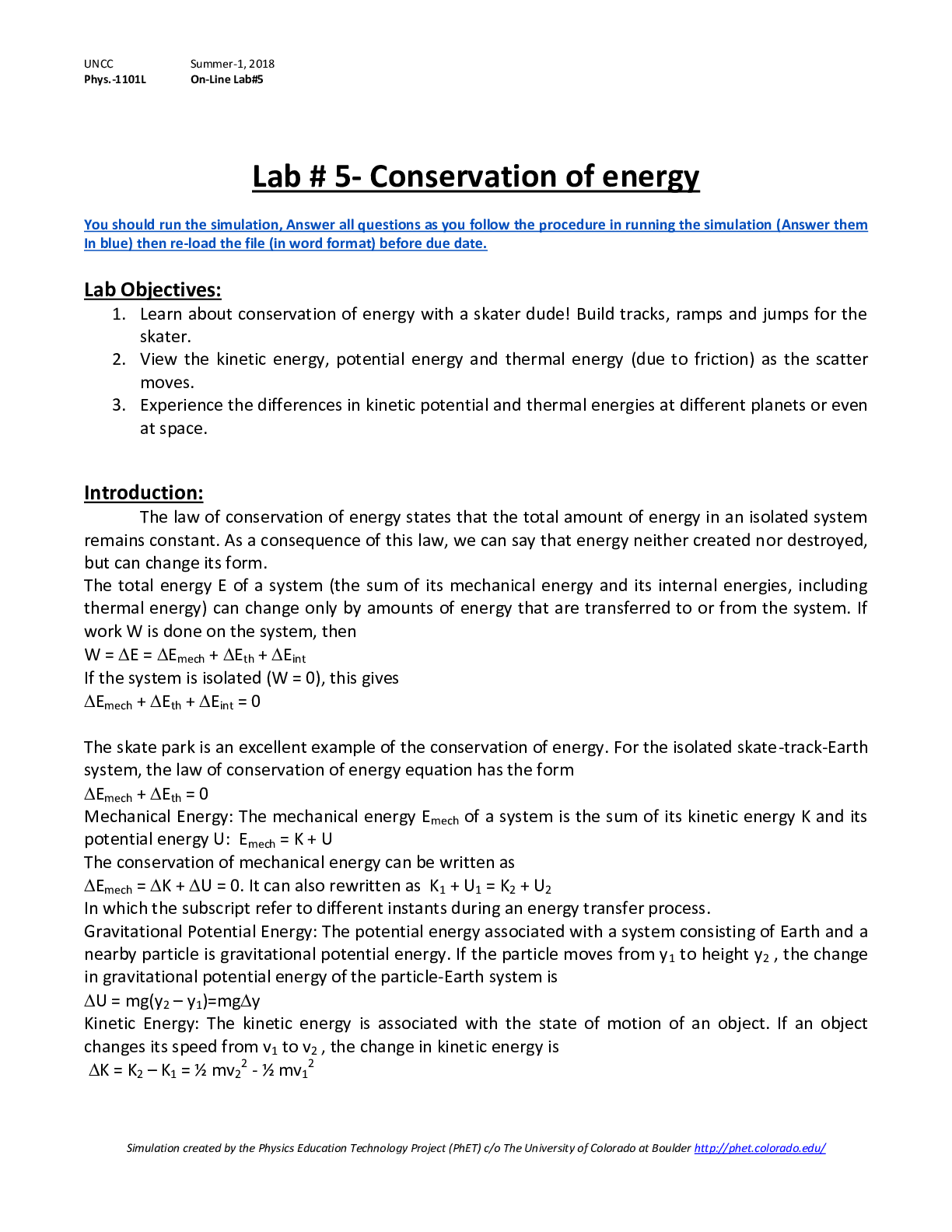
Reviews( 0 )
Document information
Connected school, study & course
About the document
Uploaded On
Jan 28, 2021
Number of pages
6
Written in
Additional information
This document has been written for:
Uploaded
Jan 28, 2021
Downloads
0
Views
58



 (1).png)
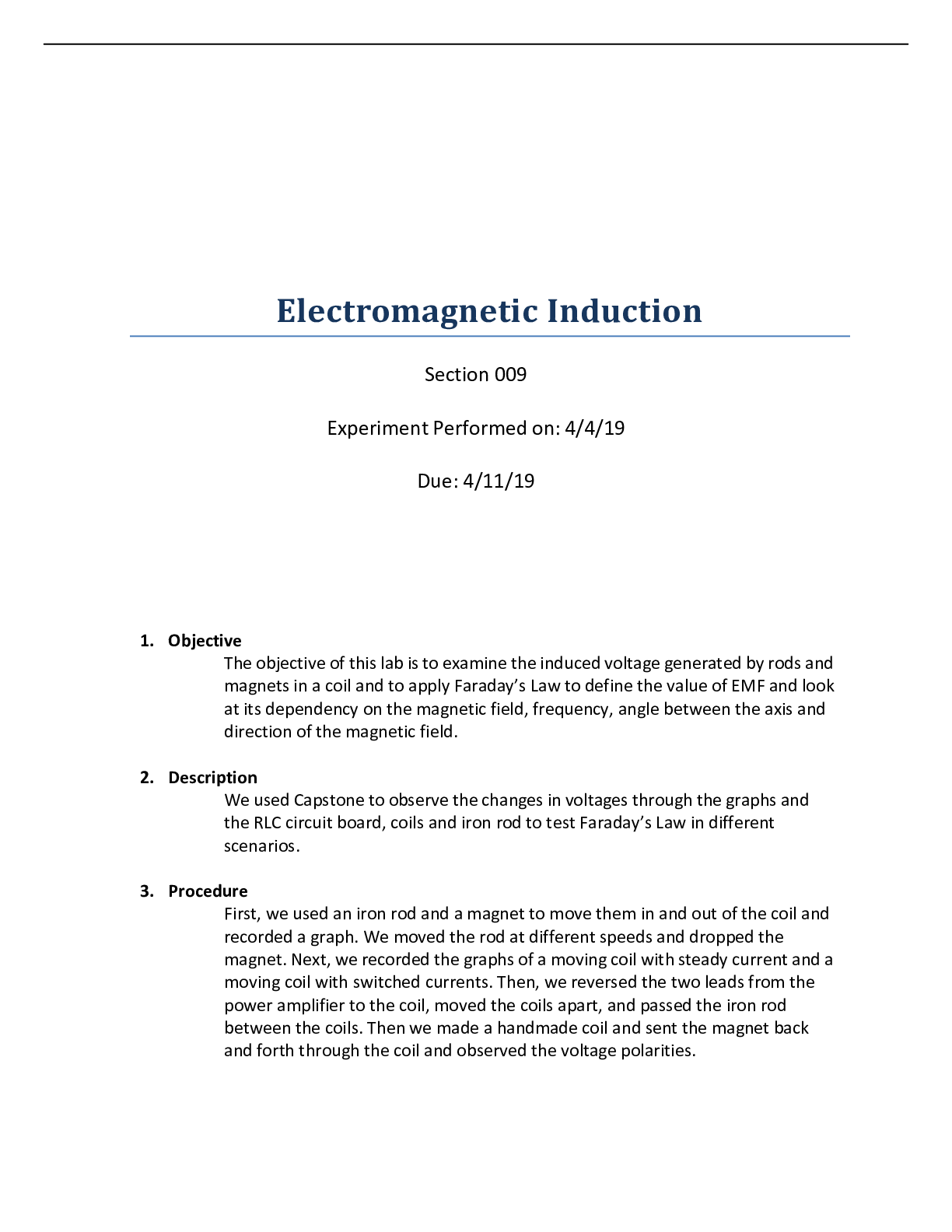
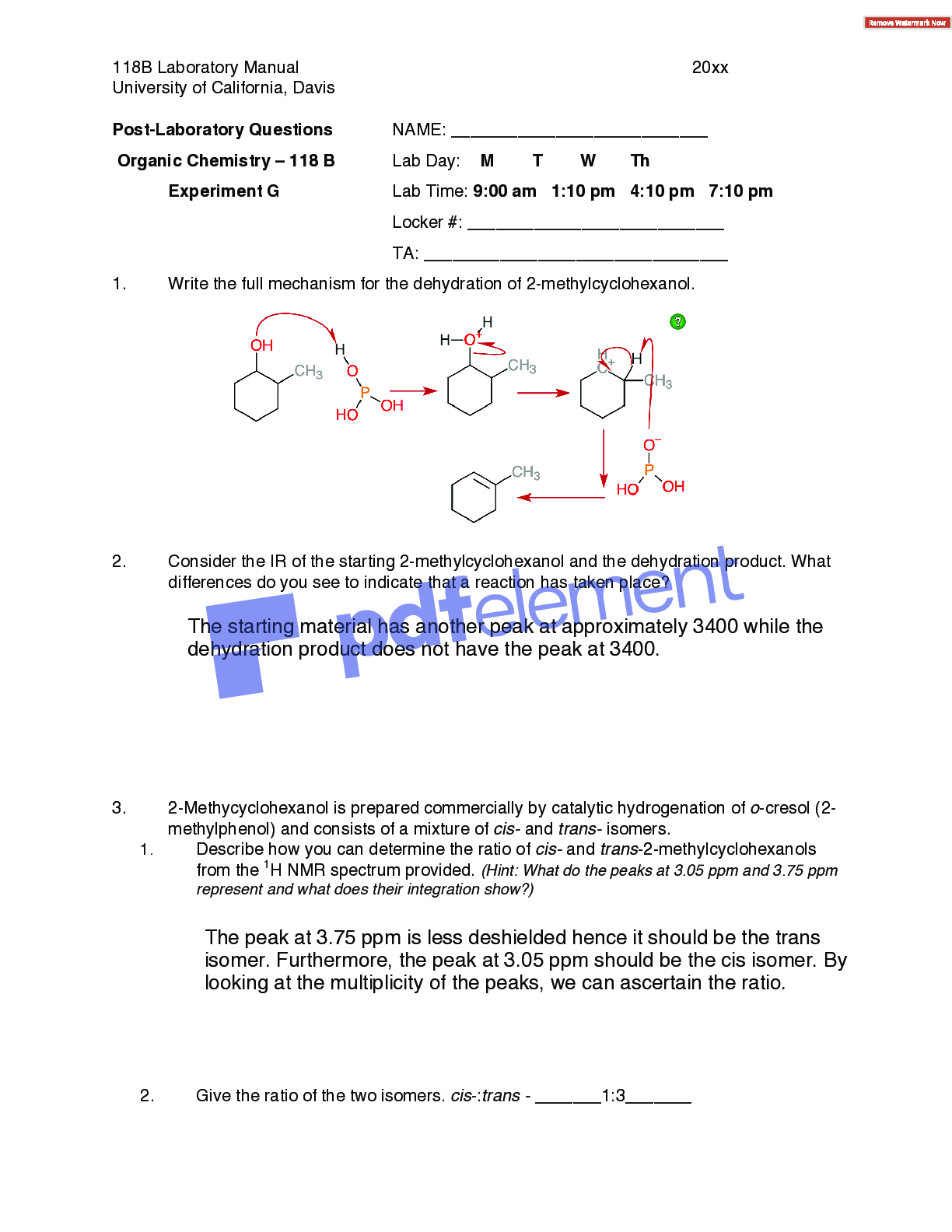
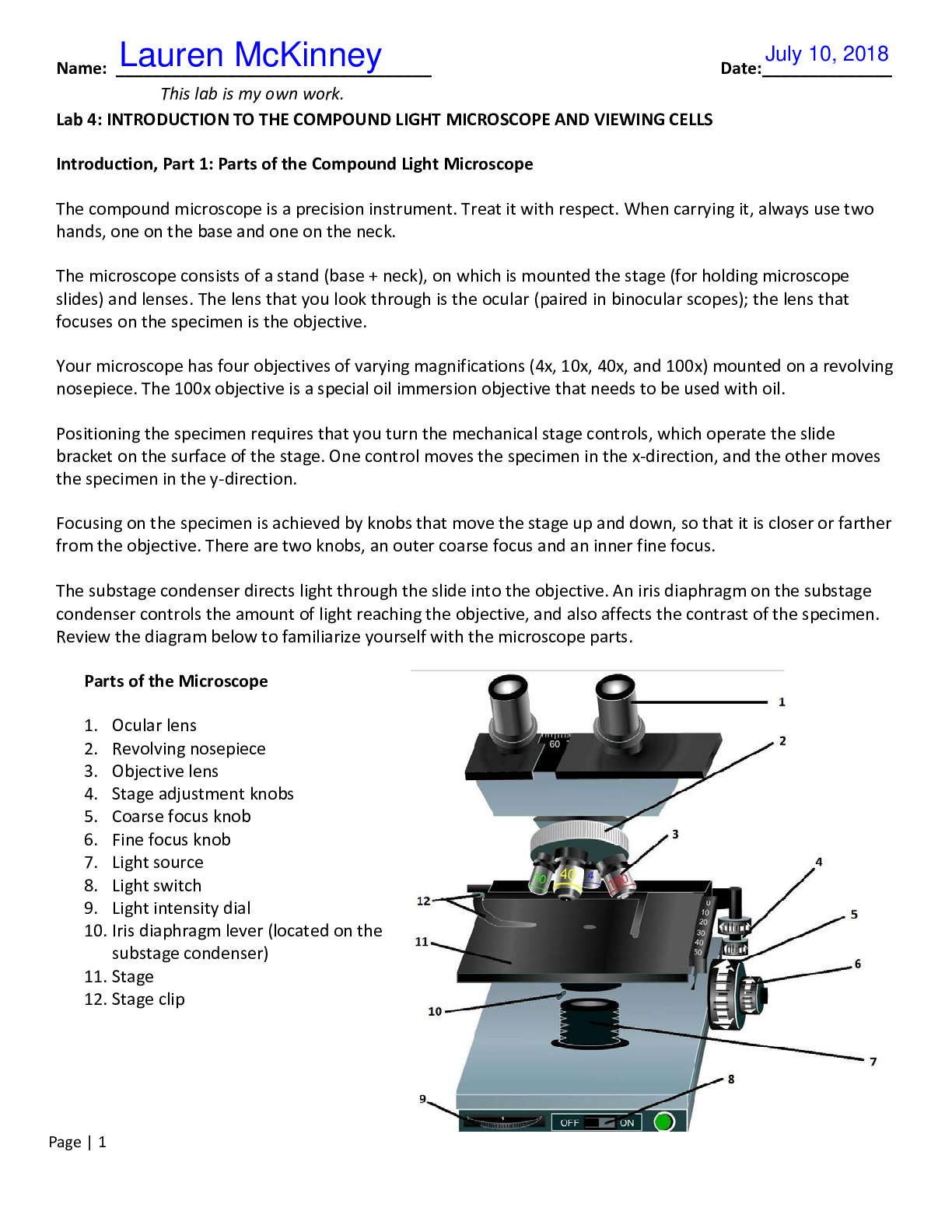
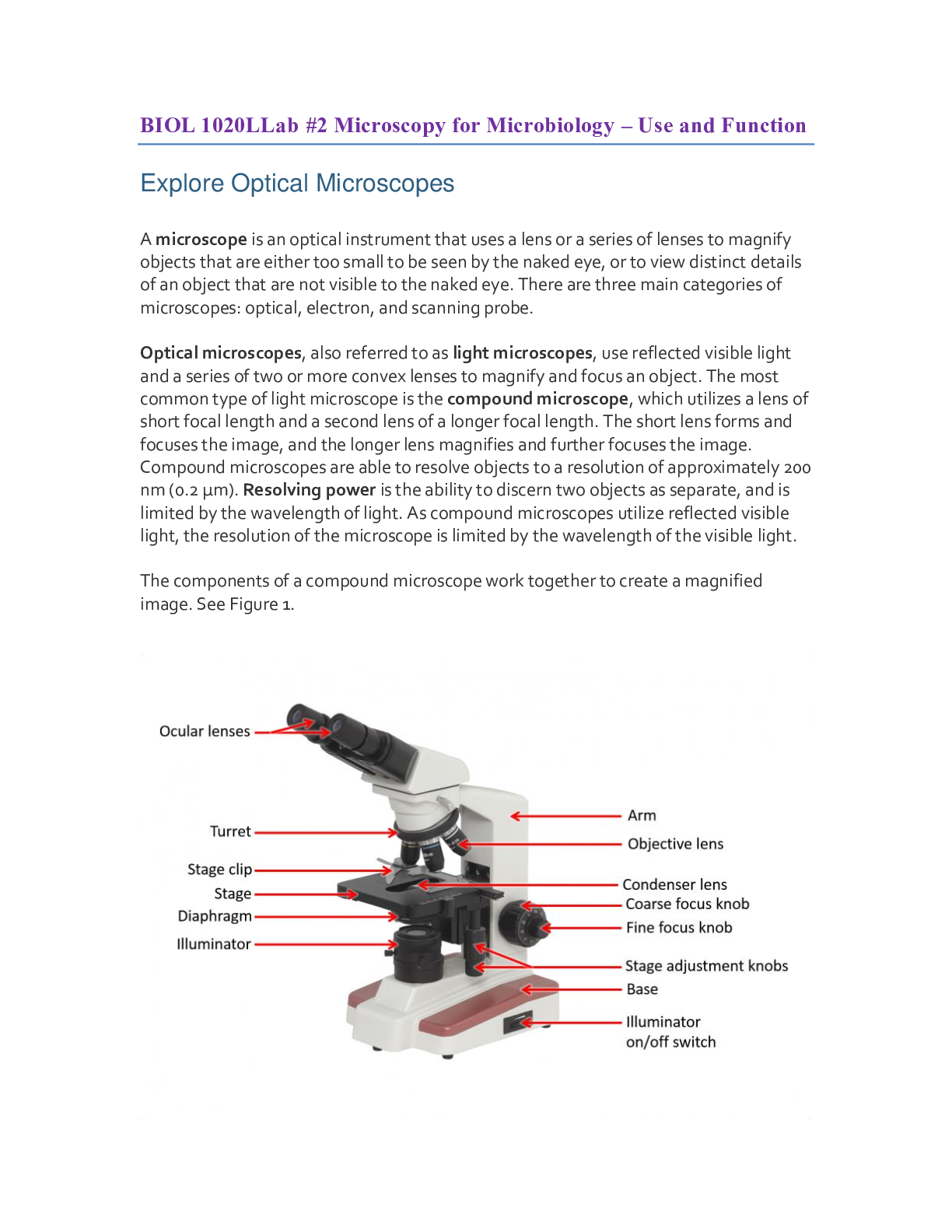

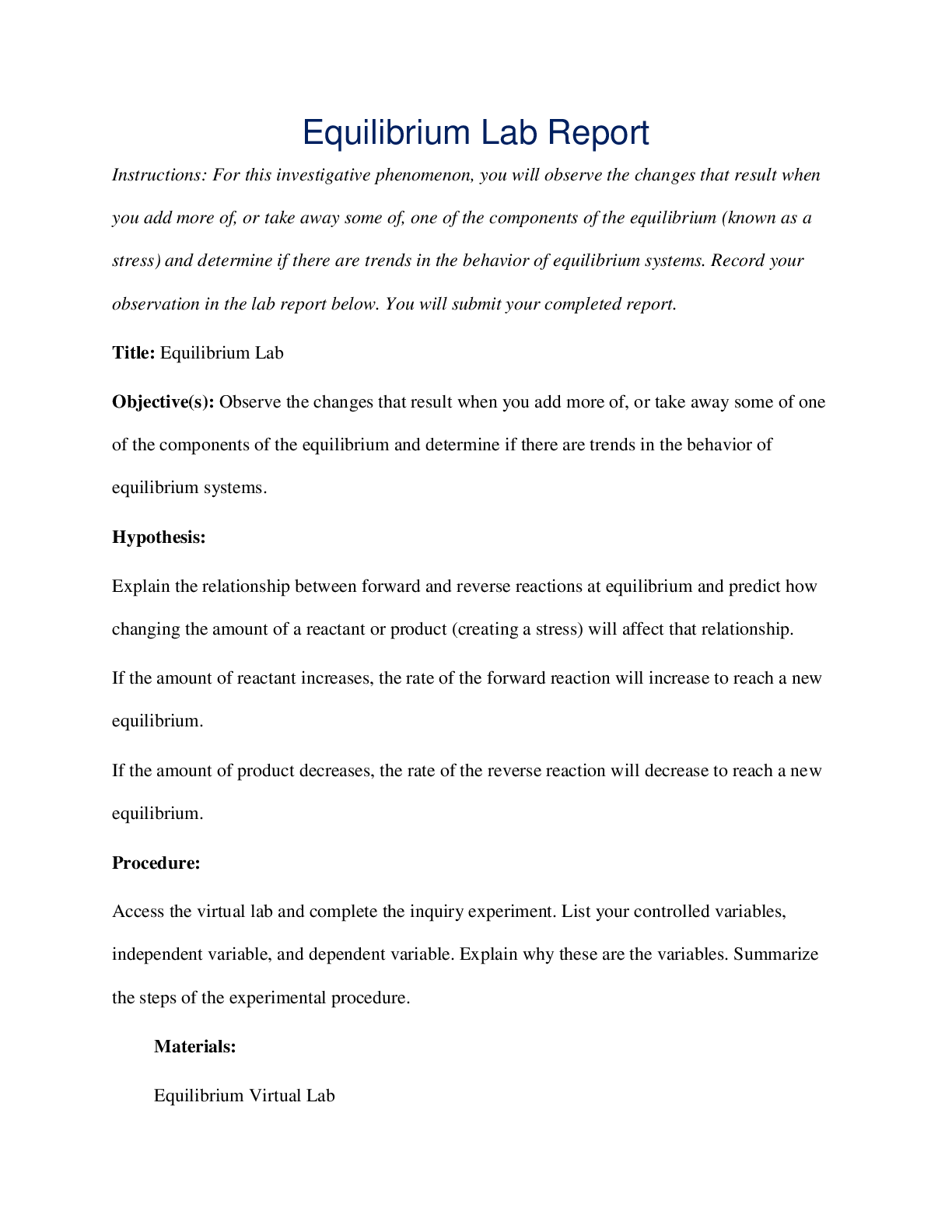


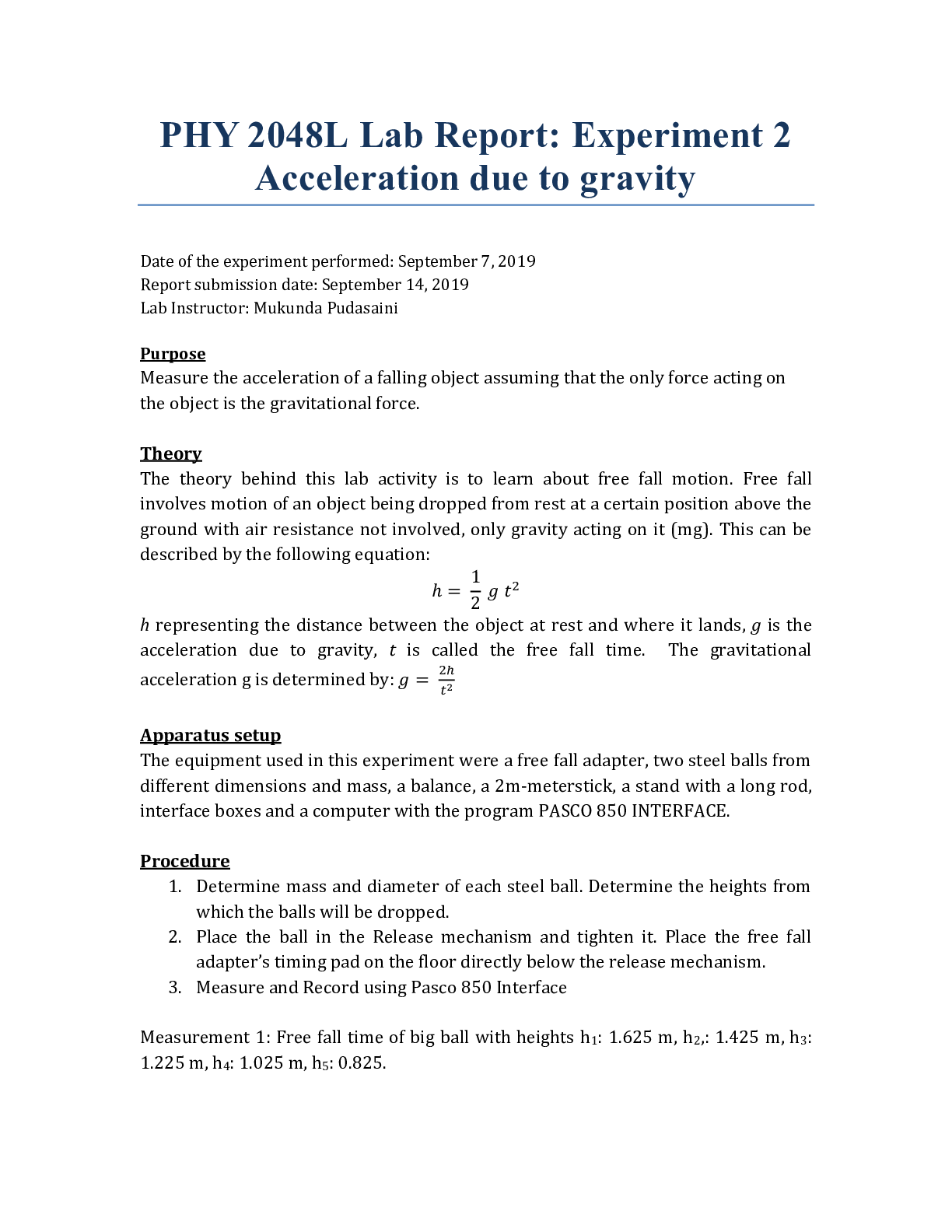


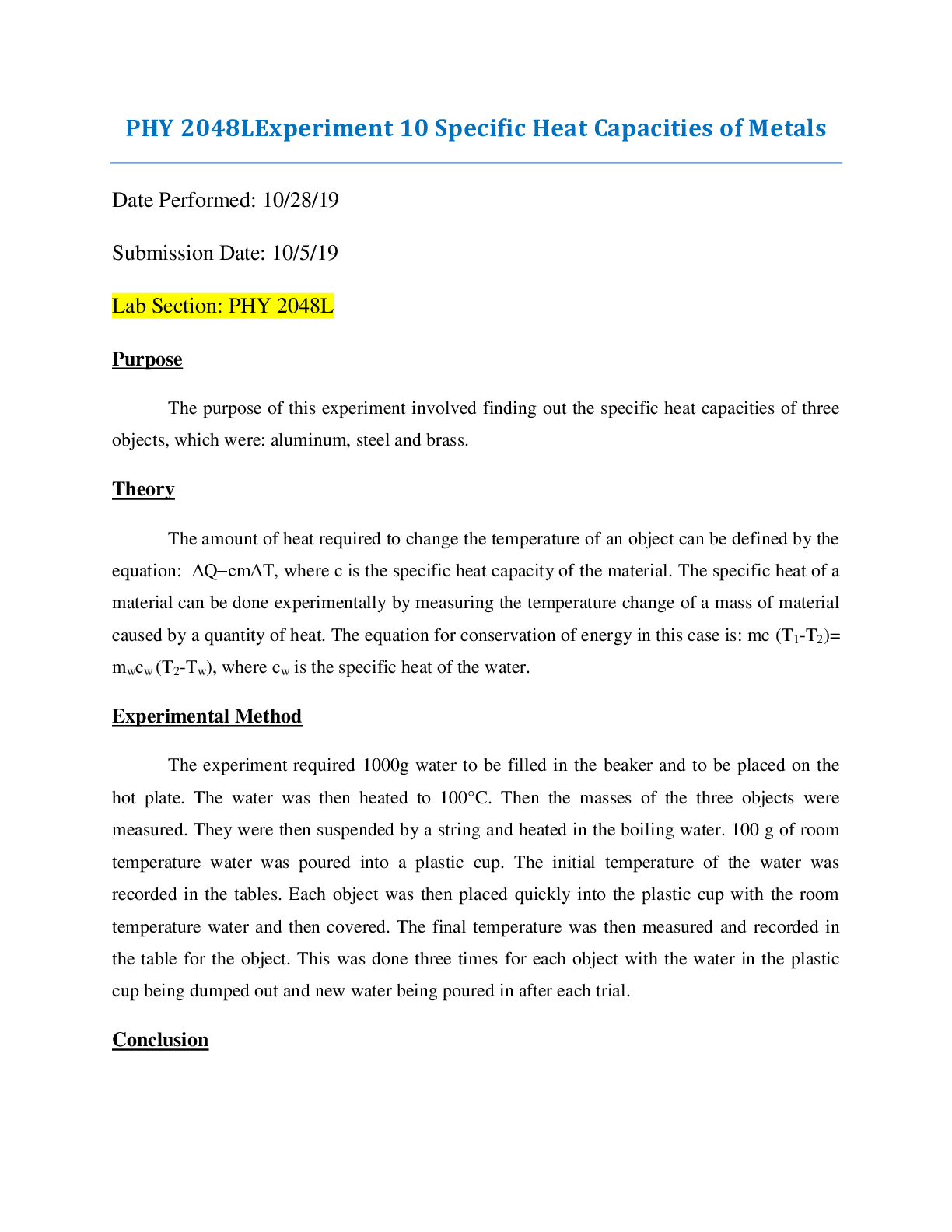
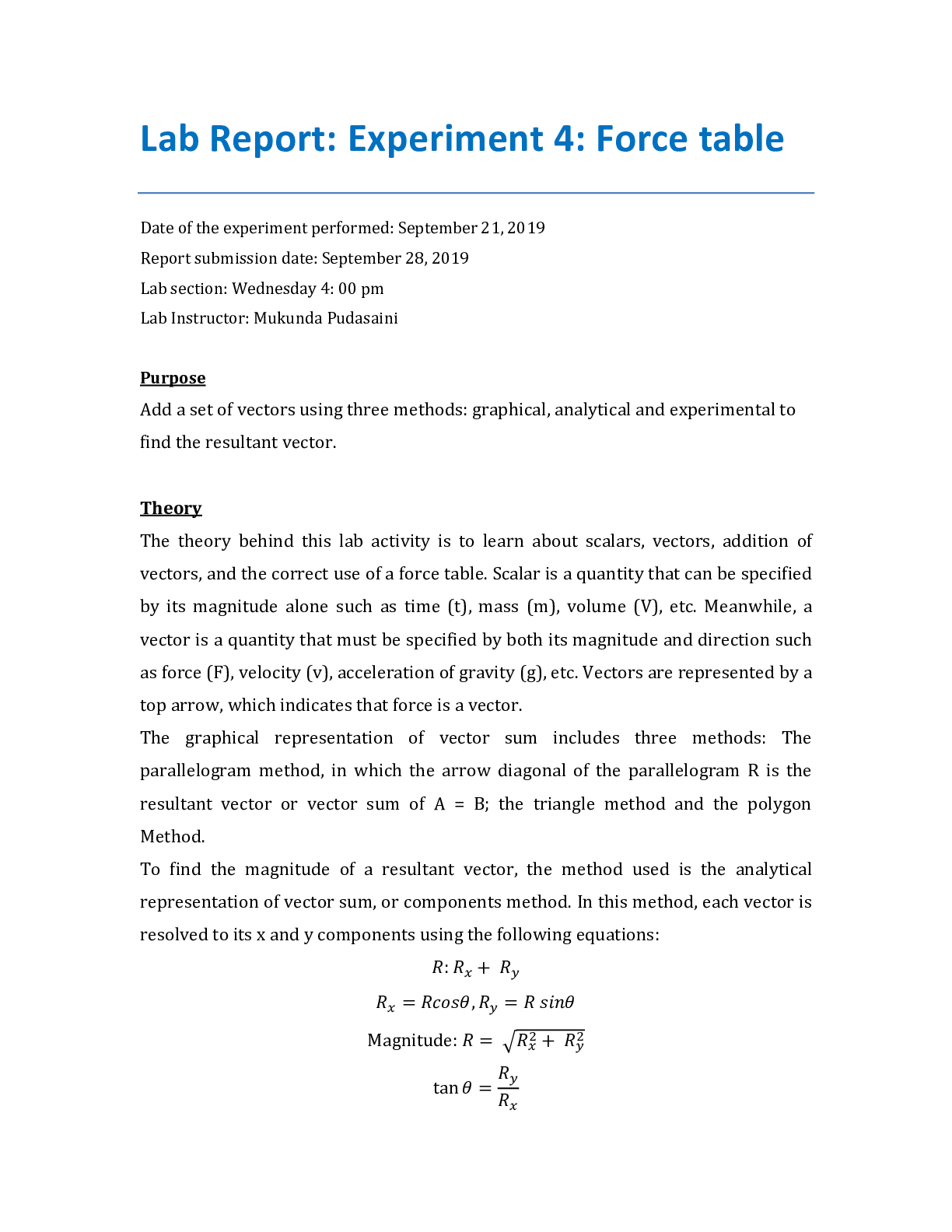
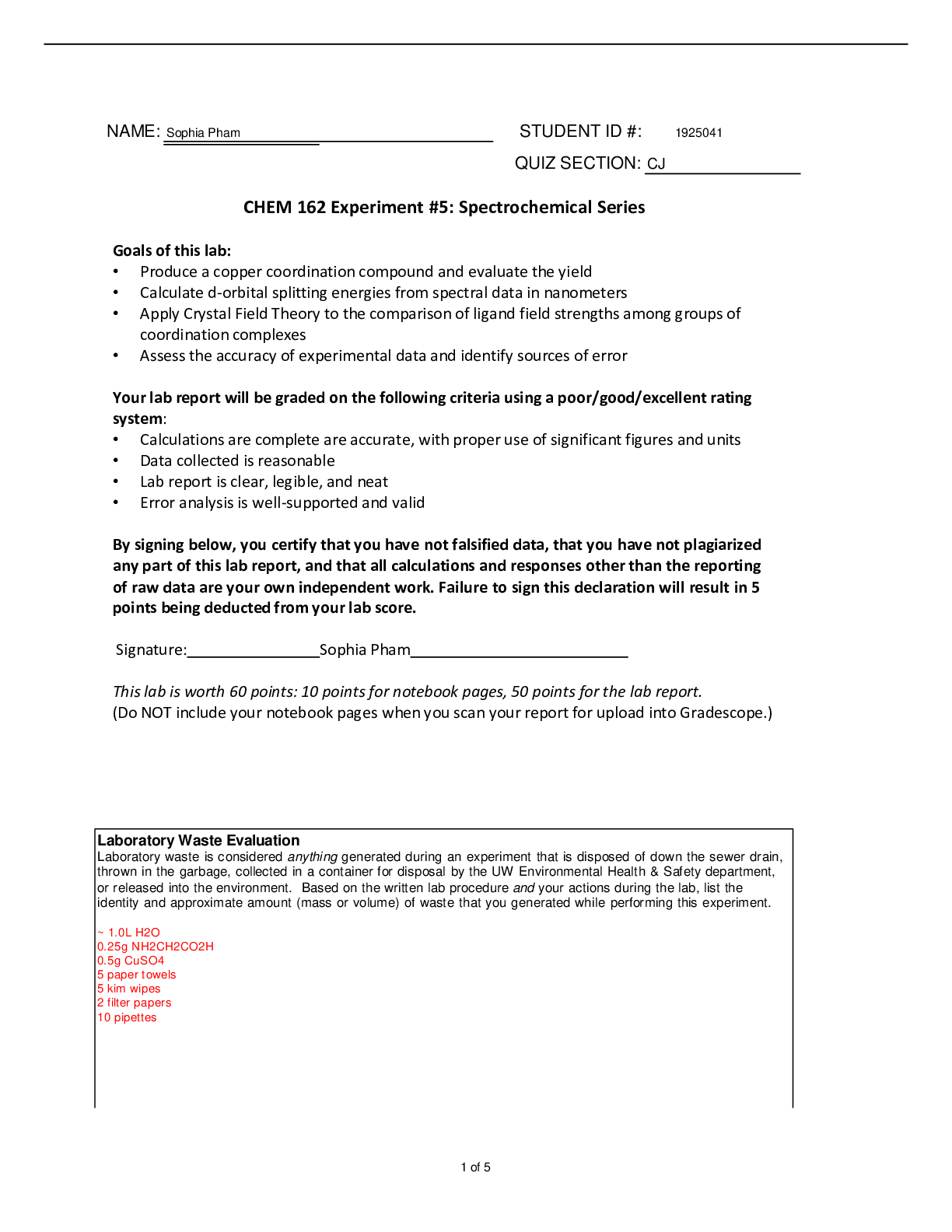
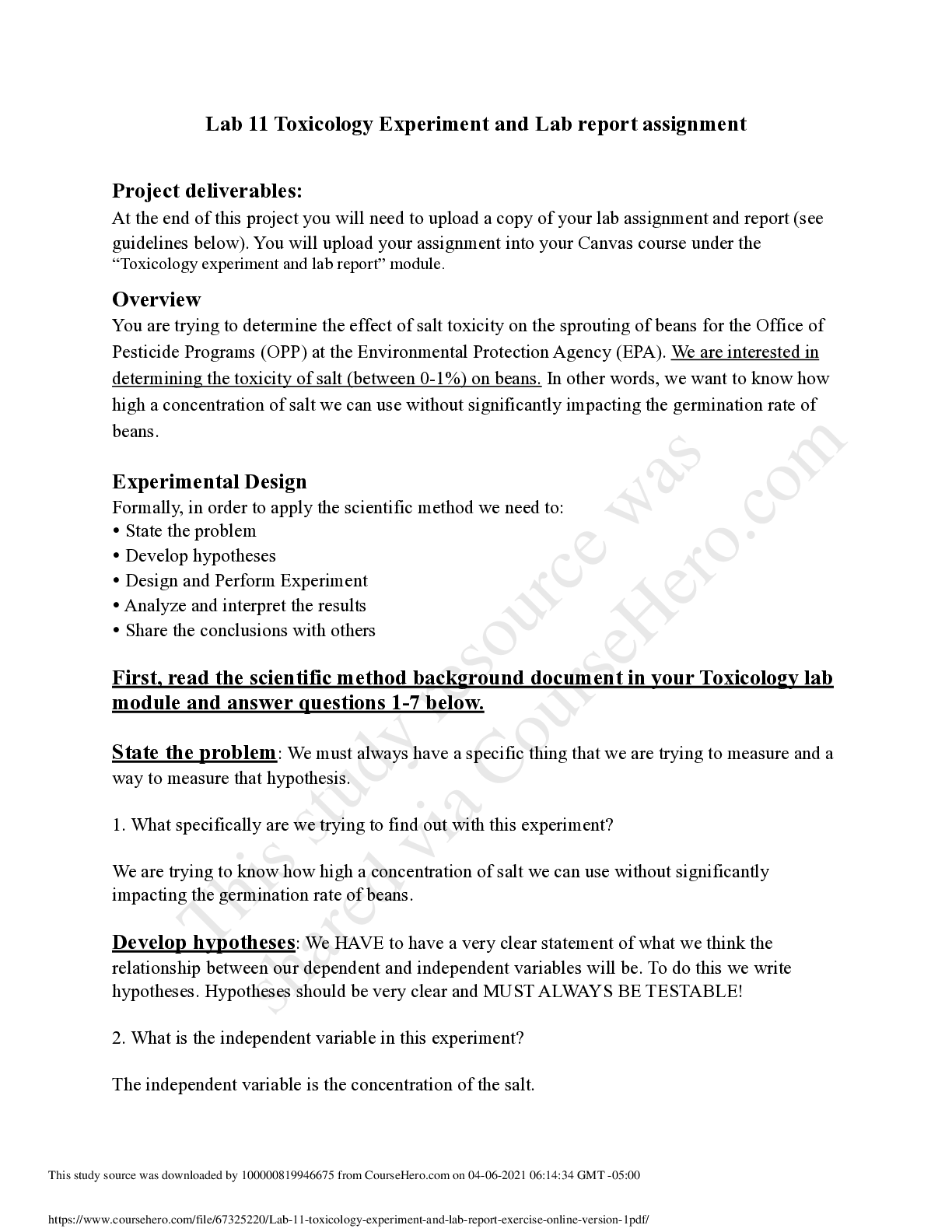



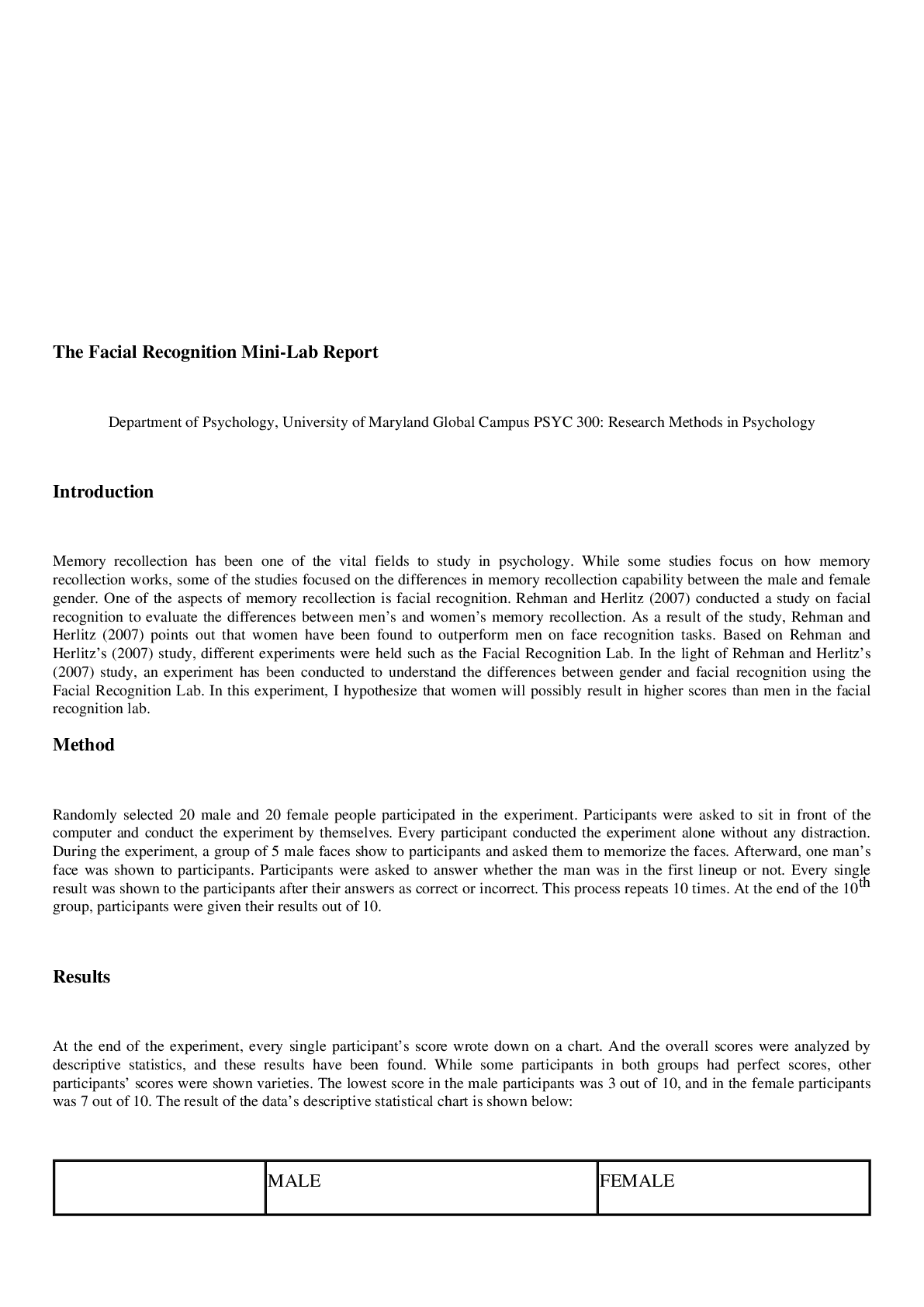
 (1).png)
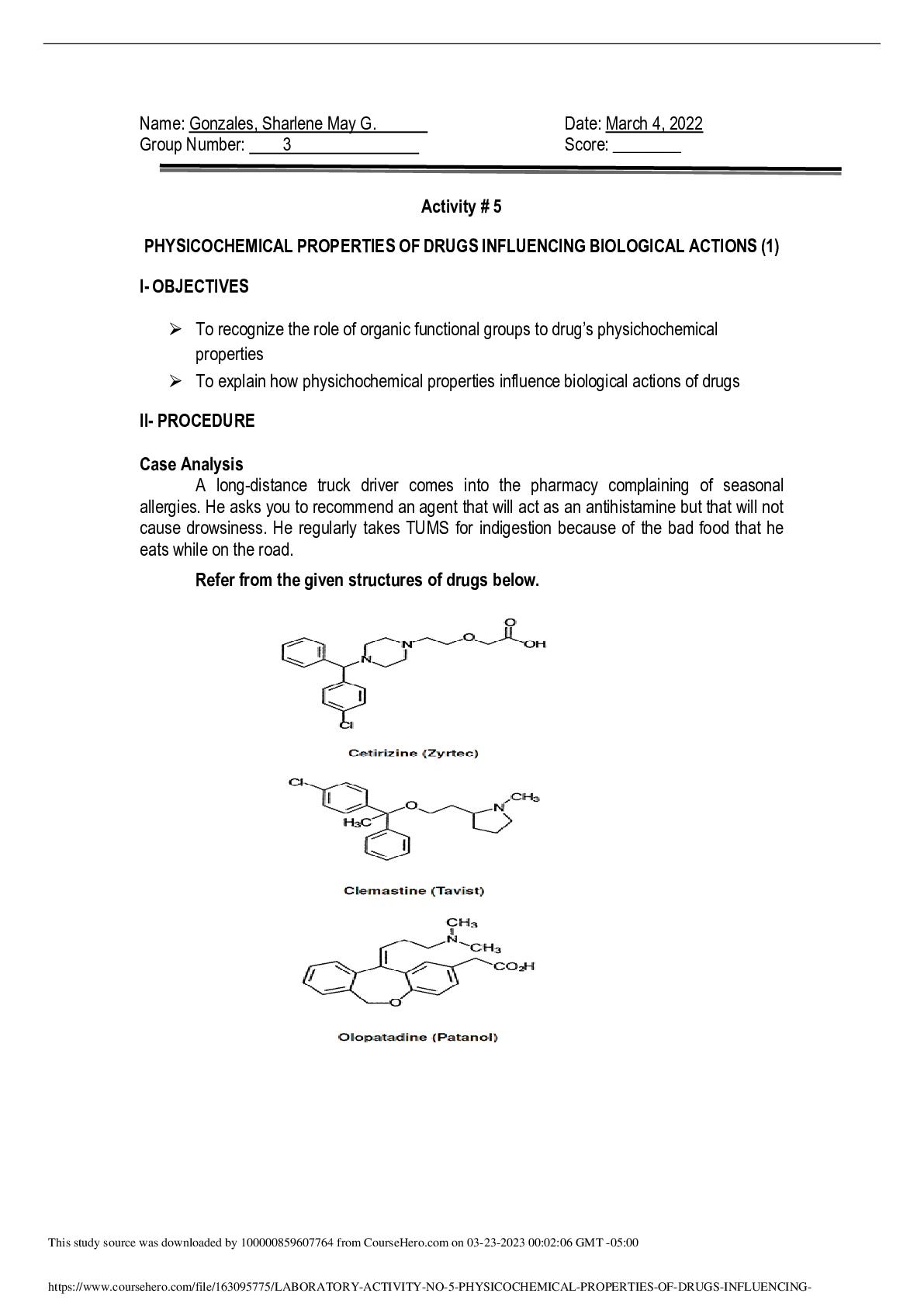
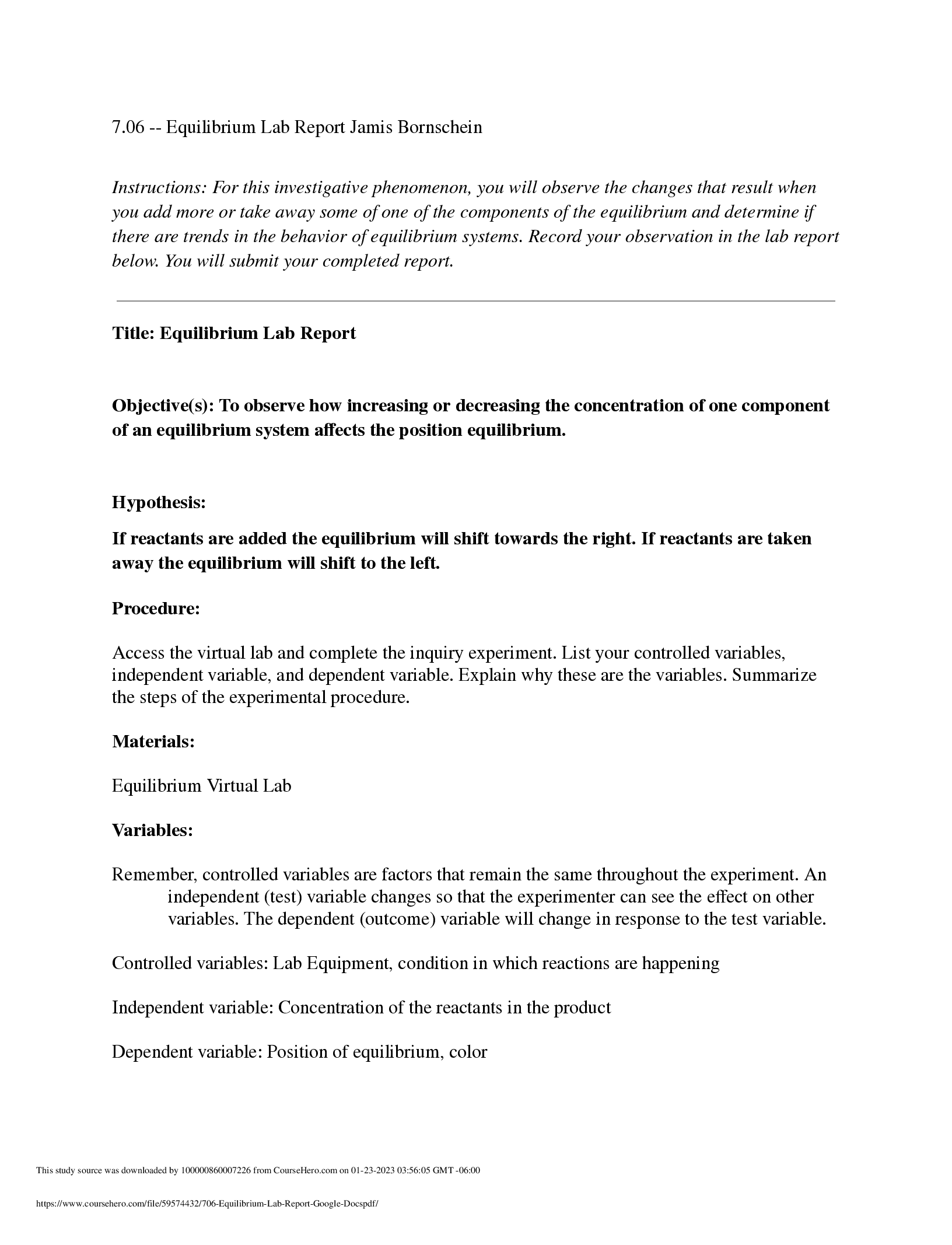
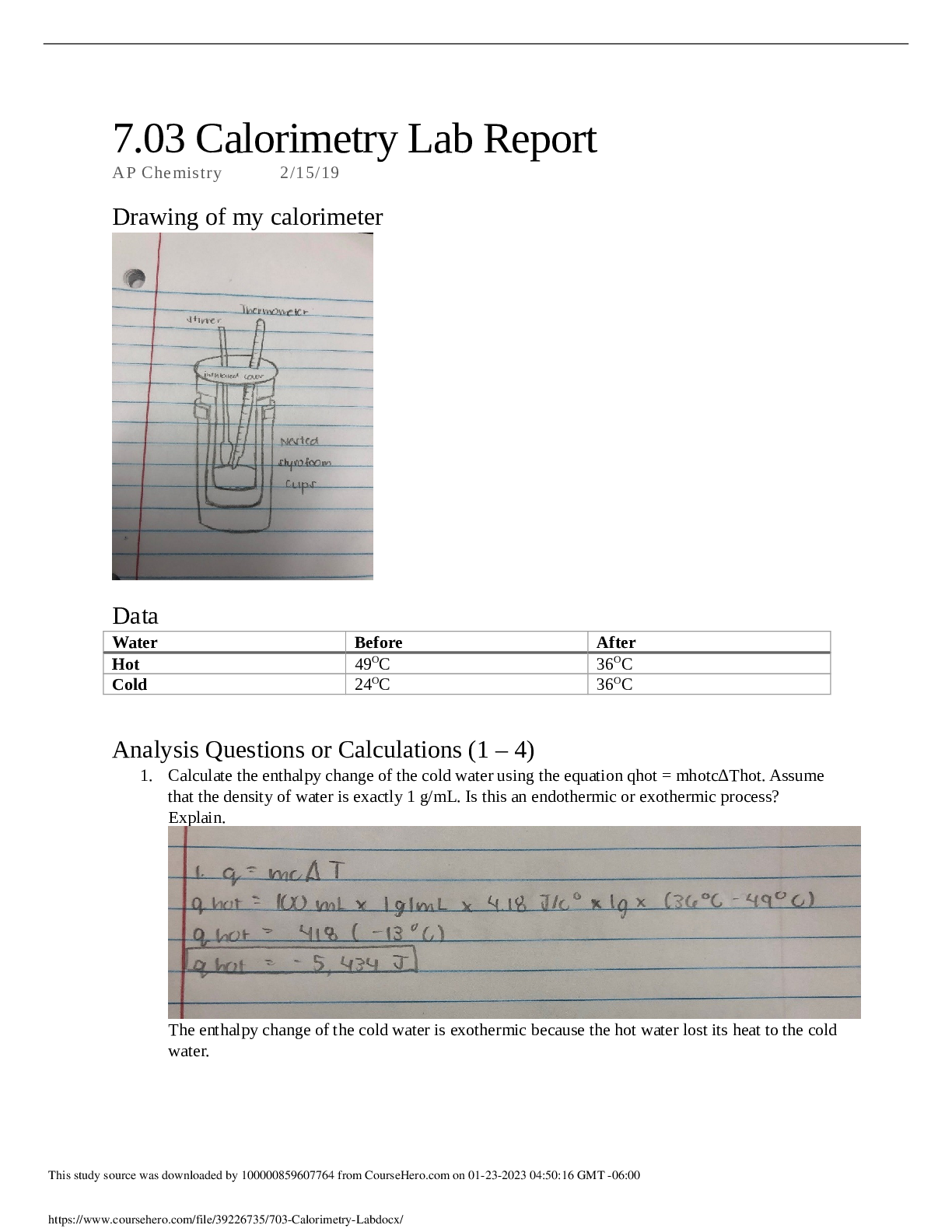
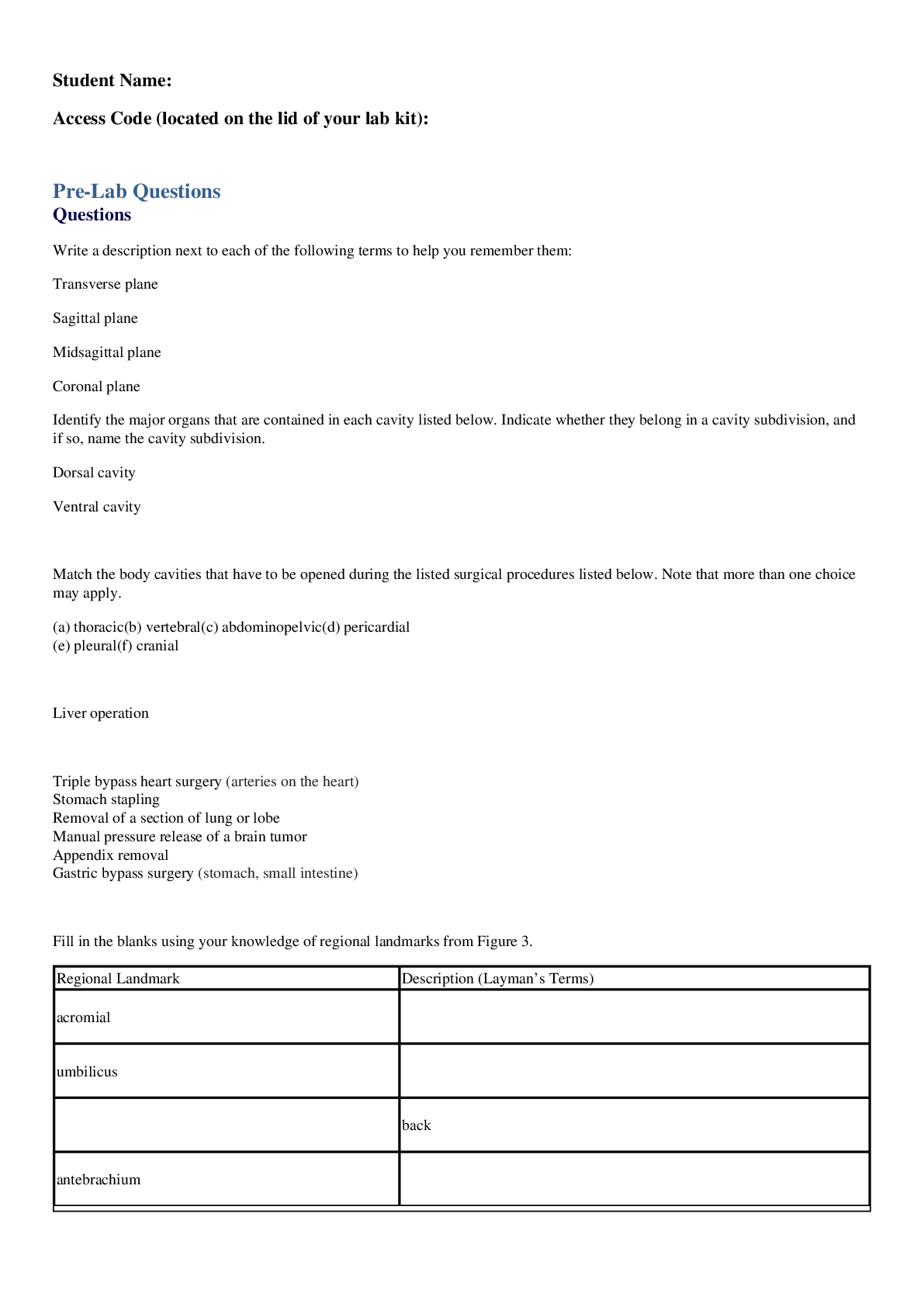
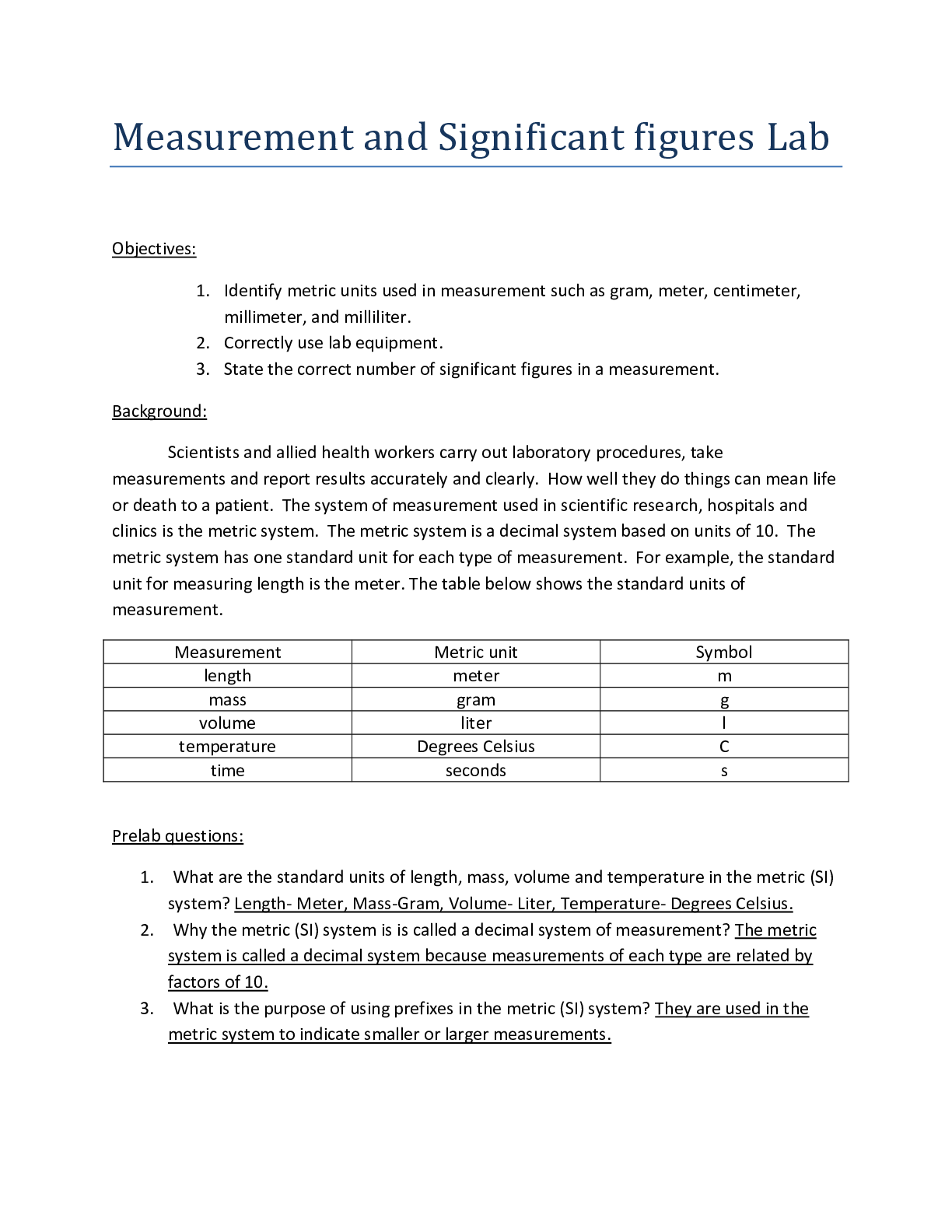
.png)





